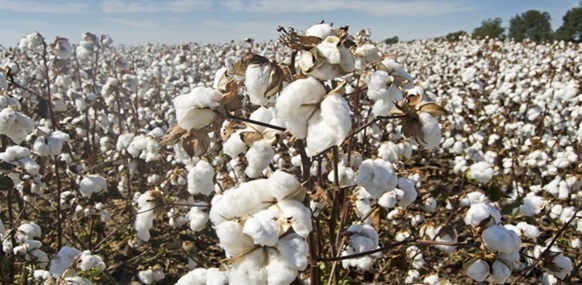Mission for ELS Cotton Promotion
In the Union Budget 2025, Finance Minister Nirmala Sitharaman introduced a five-year mission aimed at improving productivity and sustainability in cotton farming. A key focus of this initiative is the promotion of Extra-Long Staple (ELS) cotton varieties. This move is as it seeks to elevate the quality of Indian cotton and enhance farmers’ incomes.
What Is Extra-Long Staple Cotton?
- Extra-Long Staple cotton is defined by its fibre length, which exceeds 30 mm.
- It is primarily derived from the species Gossypium barbadense, often referred to as Egyptian or Pima cotton.
- In contrast, the predominant cotton variety in India, Gossypium hirsutum, falls under the medium staple category, with fibres measuring between 25 to 28.6 mm.
- ELS cotton is renowned for its superior quality and is mainly cultivated in countries like China, Egypt, Australia, and Peru.
Current ELS Cotton Cultivation in India
In India, ELS cotton is grown in limited regions, specifically in the rain-fed areas of Atpadi taluka in Maharashtra and around Coimbatore in Tamil Nadu. Despite its high quality, the cultivation of ELS cotton remains low due to several challenges faced by farmers.
Challenges in ELS Cotton Adoption
Farmers in India are hesitant to adopt ELS cotton primarily due to lower yields. While medium staple cotton yields between 10 to 12 quintals per acre, ELS cotton yields only 7 to 8 quintals. Additionally, farmers struggle to sell ELS cotton at premium prices, as adequate market linkages are not readily available. This lack of access to markets hampers the financial viability of ELS cotton farming.
Potential of the Cotton Mission
- The Cotton Mission aims to provide advanced scientific and technological support to farmers.
- This includes enhancing pest management and increasing yields through better seed varieties and agronomic practices.
- Adoption of genetically modified (GM) technologies, such as herbicide-resistant HtBT cotton, could improve weed management and overall productivity.
- Currently, India’s average yield per acre is substantially lower than that of countries like Brazil and China.
- This mission follows the 5 F principle: Farm to Fibre, Fibre to Factory, Factory to Fashion, Fashion to Foreign.
- It aims to raise farmers’ incomes and enhance India’s textile sector globally.
- Mission aims to reduce dependence on cotton imports and ensure stable raw material supply.
- It will help India’s textile industry grow sustainably, with 80% of the sector driven by MSMEs.
Other Government Measures for Textile Industry
Increased Budget Allocation for Textiles
- 2025-26 budget allocation for the Ministry of Textiles is ₹5272 crore.
- Represents a 19% increase from ₹4417.03 crore in the previous year.
- Demonstrates the government’s focus on boosting the textile sector.
Promotion of Technical Textiles
- Focus on domestic production of agro-textiles, medical textiles, and geo-textiles.
- Two new types of shuttle-less looms exempted from customs duty, reducing costs for modern machinery.
Customs Duty on Knitted Fabrics
- Increased to “20% or ₹115 per kg, whichever is higher.”
- Aims to protect domestic producers from cheap imports and enhance competitiveness.
Support for Handicraft Exports
- Export time extended from 6 months to 1 year, with an additional 3-month extension option.
- Nine new items, including sea shells and cattle horn, added to the duty-free list for export production.
Support for MSMEs in Textile Sector
- Introduction of National Manufacturing Mission, Export Promotion Mission, and Bharat Trade Net to aid exports.
- Enhanced credit and coverage for MSMEs, along with the Fund of Funds, to promote growth and employment.
- Revised MSME classification criteria for broader access to resources and support.
Future Prospects for Indian Cotton
The introduction of the Cotton Mission presents an opportunity for Indian farmers to improve their practices and yields. By leveraging modern technologies and improving market access, the mission aims to elevate the status of Indian cotton on the global stage. This could lead to an increase in the cultivation of premium varieties like ELS cotton, benefiting both farmers and the textile industry.
Month: Current Affairs - February, 2025
Category: Agriculture Current Affairs








